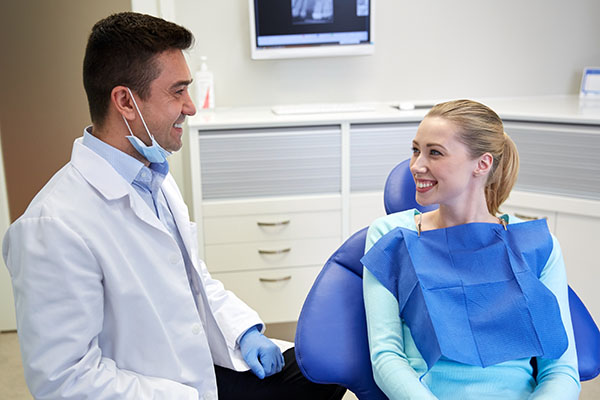 A CEREC® dental crown exam is vital for your treatment. Your dentist still needs to check the important things about your case, even if the procedure itself is short. A thorough exam will give your dentist all the information for the procedure. Here are the details about the things a dentist looks at during a CEREC crown exam.
A CEREC® dental crown exam is vital for your treatment. Your dentist still needs to check the important things about your case, even if the procedure itself is short. A thorough exam will give your dentist all the information for the procedure. Here are the details about the things a dentist looks at during a CEREC crown exam.
Health history
Checking the patient’s health history is a vital part of a CEREC crown exam. This allows the dentist to know if the patient has underlying conditions and current medications. The dentist must be aware of these things so that the patient does not receive anything that might trigger a condition. There might be occasions when the dentist might coordinate with the patient’s attending physician. The CEREC crown procedure will start once the patient’s health is clear.
Tooth damage
Checking the patient’s dentition will follow. The dentist will check the condition of the patient’s teeth. Tooth decay can manifest in cavities or small holes. The dentist must remove the decayed tooth structures.
Seeing if the decay has reached the pulp is important. An infected pulp will need an emergency root canal treatment. A CEREC crown will follow after the procedure. The ceramic crown will keep the tooth stable. It will also protect the tooth from further infection.
The dentist must also check for fractures. Any fracture that reaches the pulp will cause tremendous pain. A crown fracture is another matter. The dentist can detect this through the separation of a tooth wall or cusp. There is also the crazing of the patient’s enamel or a complete fracture. A fracture is a pathway for bacterial infection.
The dentist must close up the fracture. Failure to do so will result in endodontic, prosthodontic, and periodontal failure. For deep fractures, the dentist needs to remove the pulp and perform an emergency root canal. Then, a CEREC crown procedure will follow.
Presence of healthy tooth structure
The dentist must also check the remaining healthy tooth structure. What remains will provide resistance and retention. It also gives the CEREC crown a stable substrate for attachment between the crown and the natural tooth. The dentist must remove all decayed or damaged tooth structures first. This will help determine the amount of healthy tooth structure left.
Marginal staining and defects
Removal of any plaque, tartar, and staining should also happen first. The dentist must also check for stubborn food particles. The neighboring teeth should go through deep cleaning and teeth whitening first before the CEREC crown procedure. This will help the patient achieve a more natural result from the CEREC dental crown.
The dentist must know the mentioned aspects first before the CEREC crown procedure
A CEREC dental crown procedure can save a person’s tooth or teeth. The dentist must perform a comprehensive check first. This will help the dentist know what kind of restoration the patient needs first before the ceramic crown. An appointment with your dentist will start your CEREC journey as soon as possible.
Request an appointment or call Siegert Dental at 608-394-3943 for an appointment in our Onalaska office.
Related Posts
When you have a damaged tooth, a common restoration method is a dental crown. A traditional crown is an optimal choice. However, depending on the type of crown, it can take a while to make and adjust to your needs. Fortunately, many dental offices offer same-day crowns to restore your smile and oral health in…
CEREC® crowns provide more benefits to patients than metal restorations. Tissues of the body tend to have a different reaction to metal than to non-metal material. CEREC dental crowns are healthier, more stable dental restorations. If you want to know more about metal-free CEREC dental crowns, here are the details.CEREC metal-free crowns are appealing to…
Many patients' teeth require restorative work to improve function or appearance at some point. CEREC®, which stands for "Chairside Economical Restoration of Esthetic Ceramics," is a computer-aided design and manufacturing system that dentists can offer as an alternative to some types of traditional restorations. Patients may find these crown restorations to require a less invasive…
